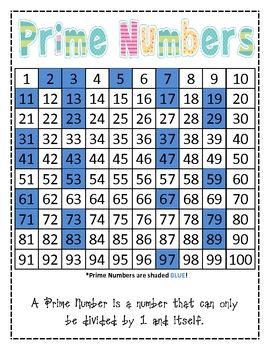
Primes with equal-sized prime gaps above and below them, so that they are equal to the arithmetic mean of the nearest primes above and below. n is a natural number (including 0) in the definitions.

More details are in the article for the name. Lists of primes by typeīelow are listed the first prime numbers of many named forms and types. A different computation found that there are 18,435,599,767,349,200,867,866 primes (roughly 2 ×10 22) below 10 24, if the Riemann hypothesis is true. There are known formulae to evaluate the prime-counting function (the number of primes below a given value) faster than computing the primes. Some examples of prime numbers are 2, 13, 53, 71 etc. Another way of saying it is that a prime number is defined as a whole number which has only 2 factors 1 and itself. That means 95,676,260,903,887,607 primes (nearly 10 17), but they were not stored. What are prime numbers A whole number, which is greater than 1, and which has only 2 factors 1 and itself, is called a prime numbers.
#Prim numbers verification
The Goldbach conjecture verification project reports that it has computed all primes below 4×10 18. For 341 to be a prime number, it would have been required that 341 has only two divisors, i.e.


The list of all positive divisors (i.e., the list of all integers that divide 341) is as follows: 1, 11, 31, 341. For 341, the answer is: No, 341 is not a prime number. The following table lists the first 1000 primes, with 20 columns of consecutive primes in each of the 50 rows. Is 341 a prime number It is possible to find out using mathematical methods whether a given integer is a prime number or not.


 0 kommentar(er)
0 kommentar(er)
